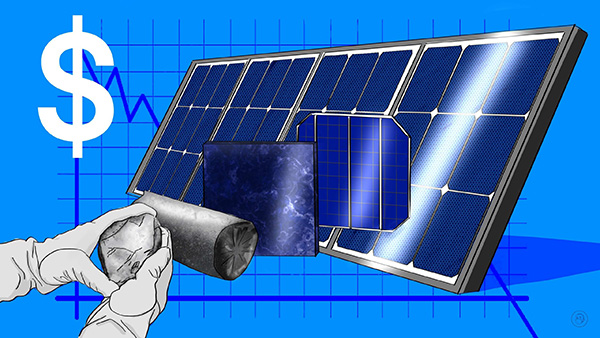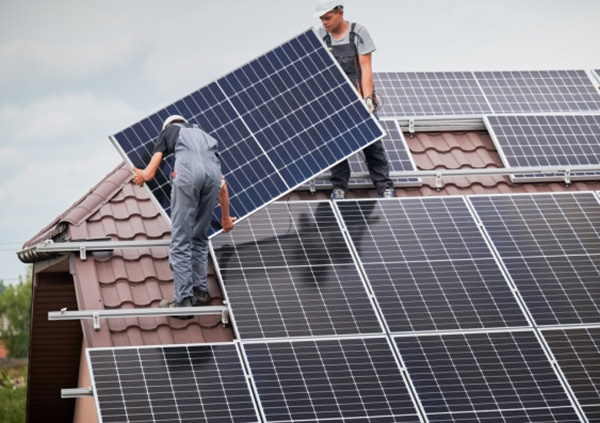Description
The advantages of polysilicon solar panels include high efficiency, durability, cost-effectiveness, environmental benefits, versatility in applications, and advanced manufacturing processes.
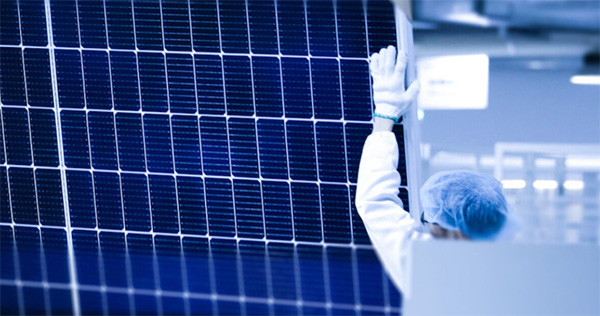
Efficiency and Performance
Polysilicon solar panels, often called multi-crystalline solar panels, have seen a steady improvement in their efficiency and performance over the years. This section dives deep into their specifics, comparing them with other types of solar panels and identifying the factors that contribute to their efficiency.
How polysilicon panels compare to other types
Here's a comparison of the average efficiencies of different types of solar panels:
| Type of Solar Panel |
Average Efficiency (%) |
Cost per Watt ($) |
Lifespan (years) |
| Polysilicon |
17-20% |
0.50-0.60 |
25-30 |
| Monocrystalline |
19-22% |
0.60-0.70 |
25-30 |
| Thin-film |
10-12% |
0.40-0.50 |
20-25 |
| Cadmium Telluride (CdTe) |
15-17% |
0.42-0.50 |
25-30 |
While
monocrystalline panels typically have a slight edge over polysilicon in terms of efficiency, polysilicon panels often offer a better balance between cost and performance.
Factors contributing to their efficiency
- Silicon Quality: The quality of the silicon material used plays a crucial role. High-quality silicon will usually yield better performance.
- Panel Construction: The way the cells are arranged, connected, and encapsulated can have a significant impact on the panel's efficiency.
- Reflection Reduction: Modern polysilicon panels often come with anti-reflective coatings, ensuring that more sunlight gets absorbed, rather than being reflected away.
- Temperature Coefficients: Polysilicon panels tend to have lower temperature coefficients compared to other types, meaning they lose less efficiency when exposed to high temperatures.
- Optimized Circuit Design: An optimized electrical circuit design helps in reducing losses due to resistances and ensures maximum power extraction from each cell.
Understanding these factors can be key to optimizing the efficiency of a solar power system, ensuring that you get the best performance for your
budget. While other solar panel types might excel in specific areas, polysilicon panels often present a balanced choice, especially when considering aspects like cost, lifespan, and
quality.
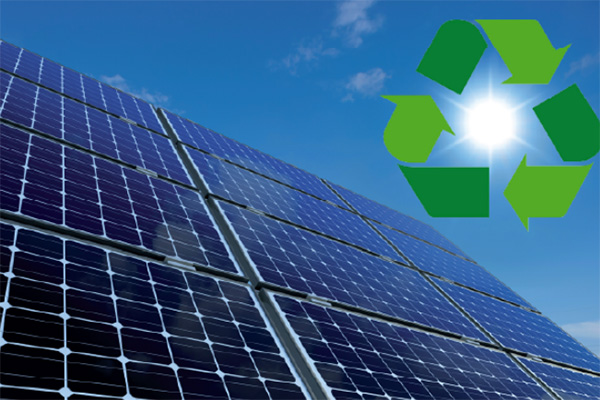
Durability and Longevity
Polysilicon solar panels have garnered a reputation not just for their performance but also for their resilience and longevity. In an era where sustainability and long-term value for money are paramount, understanding the durability and expected lifespan of solar installations becomes crucial.
Lifespan of polysilicon solar panels
Polysilicon solar panels, on average, boast a lifespan of 25-30 years. However, it's essential to note that this doesn't mean the panels will stop producing electricity after this period. Instead, their
efficiency starts to degrade slightly over time. For instance:
- Year 1-10: The efficiency might degrade by about 0.5% per year.
- Year 10-20: The degradation rate can slow down to around 0.25% per year.
- Year 20-30: The panels can still produce up to 85% of their initial capacity, showcasing their lasting value.
With proper maintenance, it's not uncommon for polysilicon panels to exceed their expected lifespan, further amplifying their cost-effectiveness over time.
Resistance to environmental factors
One of the standout features of polysilicon solar panels is their robustness against various environmental stressors:
- UV Radiation: Polysilicon panels are constructed to resist degradation from continuous exposure to sunlight, ensuring consistent performance over the years.
- Thermal Fluctuations: Thanks to their lower temperature coefficients, these panels can maintain their functionality even in fluctuating temperatures, be it scorching summers or freezing winters.
- Moisture and Rain: Sealed and encapsulated designs keep moisture out, preventing potential issues like corrosion or decreased quality of output.
- Physical Stresses: These panels can handle a lot of physical stress, whether from piled-up snow or debris carried by strong winds, which minimizes the risk of breaking or malfunctioning.
- Salt and Coastal Climates: Specialized coatings can be applied to panels situated in coastal areas, protecting them from the corrosive effects of salt in the air.
By ensuring high resistance to these factors, polysilicon panels promise both durability and consistent performance. When deciding on a solar installation, considering both the immediate
cost and the long-term returns in terms of durability and maintenance can make polysilicon panels a compelling option for many homeowners and businesses.
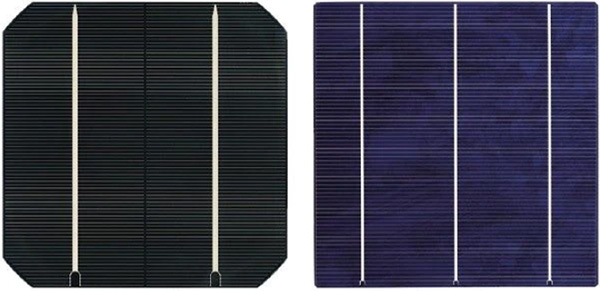
Cost-effectiveness
When considering the transition to solar energy, one of the primary concerns for homeowners and businesses alike is the cost-effectiveness of the investment. Polysilicon solar panels, with their balanced efficiency and durable design, often emerge as a top choice when evaluating this factor.
Initial investment compared to potential energy savings
The initial investment for a typical residential solar installation involving polysilicon panels can range from $10,000 to $15,000 for a 5kW system. Here's a breakdown:
- Panels: $2,500 - $3,000
- Inverter: $1,000 - $1,500
- Installation: $4,000 - $5,000
- Miscellaneous (Cables, Mounting, etc.): $2,500 - $3,000
Considering that the average household electricity bill can be around $1,200 per year, with solar, this could be reduced by up to 70%, resulting in savings of $840 annually.
Given these savings, the
payback period or the time it takes to recoup the initial investment can be approximately 12-18 years. However, this duration can vary based on local electricity rates, government incentives, and individual energy consumption patterns.
Return on investment over time
When thinking about the return on investment (ROI), it's pivotal to view solar panels not just as an expense, but as an asset with the potential to add value to your property. Here's a more in-depth look:
- Energy Bill Savings: As mentioned, savings can amount to $840 per year, amounting to $21,000 over a 25-year lifespan of the panel.
- Increase in Property Value: Homes equipped with solar panels often see an increase in property value. For a median-priced home, this could translate to an additional $15,000 in value.
- Tax Incentives and Rebates: Many governments and local authorities offer tax breaks and rebates for solar installations, which can further enhance the ROI. For instance, a 30% federal tax credit would mean savings of $3,000 on a $10,000 installation.
- Environmental ROI: While not quantifiable in direct monetary terms, the environmental impact, including reduced carbon footprint and support for sustainable energy, is invaluable.
By taking all these factors into account, the
ROI for polysilicon solar panels can be compelling, especially when considering long-term financial and environmental benefits. Making a well-informed decision requires a thorough understanding of both upfront costs and the potential for savings and value addition over time.
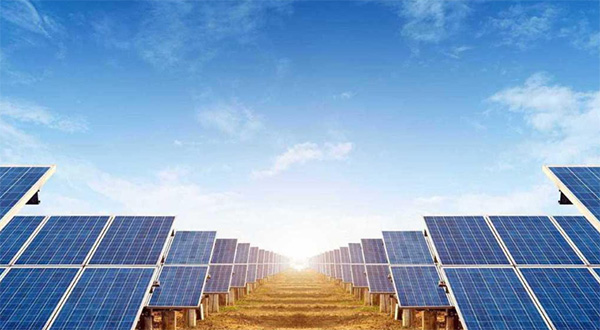
Environmental Benefits
The growing urgency to combat climate change and reduce human impact on the environment makes the shift to renewable energy sources more crucial than ever. Among renewable options, solar energy stands out, especially with technologies like polysilicon solar panels that offer significant environmental benefits.
Reduced carbon footprint
The use of solar panels directly reduces dependence on fossil fuels. For every kilowatt-hour (kWh) of solar energy produced, approximately 0.9 pounds of CO2 emissions are prevented, which would otherwise be produced if coal-fired power plants generated that electricity. Here's a breakdown:
- Average Household Consumption: Let's assume an average home uses about 10,800 kWh of electricity annually.
- Annual CO2 Emission Prevention: By fulfilling this demand using solar energy, we prevent 9,720 pounds (or 4.86 tons) of CO2 emissions each year.
Over the 25-year lifespan of a polysilicon solar panel, this would amount to a staggering 121.5 tons of CO2 emissions saved. The impact of this on combating global warming and improving air quality cannot be overstated, making solar installations a major player in the fight against climate change. For more on carbon footprints and their implications, the
Wikipedia page on Carbon Footprint offers in-depth insights.
Sustainability and recyclability of polysilicon panels
Solar panels, particularly polysilicon ones, are not only about harnessing sustainable energy but are also designed keeping sustainability in mind.
- Material Use: Silicon, the primary material in polysilicon panels, is the second most abundant element in the Earth's crust. This makes the source material for these panels incredibly sustainable.
- Low Water Usage: Compared to other energy sources, particularly nuclear and certain fossil fuels, solar PV panels, including polysilicon variants, use significantly less water. This ensures that vital resources are conserved.
- Recyclability: Once a polysilicon solar panel reaches the end of its operational life, up to 90% of its material can be recycled and used to produce new panels. Components like aluminum frames, glass sheets, and even the silicon cells themselves can be repurposed, ensuring minimal waste.
- Reduction in Other Pollutants: Apart from carbon emissions, burning fossil fuels release other harmful pollutants like sulfur dioxide and nitrogen oxides. Transitioning to solar power can substantially reduce these pollutants, leading to better air quality and lesser health issues in the community.
Incorporating solar panels, and particularly focusing on sustainable options like polysilicon, can be a significant step towards a greener, more sustainable future. By understanding the breadth of
environmental benefits these panels offer, individuals and businesses can make more informed choices about their energy consumption and its broader impact on the planet.
Versatility in Application
The unique design and inherent features of polysilicon solar panels position them as a versatile solution in the realm of renewable energy. Their adaptability transcends not only varied climatic conditions but also an array of infrastructure types, making them a preferred choice for many solar energy endeavors.
Suitability for diverse climates and environments
Polysilicon panels have shown exceptional performance across different climate conditions:
- Tropical and Sun-rich Areas: In places with abundant sunlight, such as Arizona or parts of Africa, polysilicon panels can harness sunlight with an efficiency rate of about 15-18%. This means for a 1 m² panel area, with average insolation of 5 kWh/m²/day, the energy yield can be around 0.75 kWh to 0.9 kWh daily.
- Cold and Snowy Regions: Contrary to popular belief, solar panels, including those made of polysilicon, can perform admirably in colder climates. The reason is, solar panels often see improved performance in cooler temperatures. For instance, in places like Canada, while the days might be shorter, the reflection of sunlight from snow can boost panel efficiency, compensating for fewer daylight hours.
- Variable Climates: In areas where weather conditions fluctuate widely, the robust nature of polysilicon panels ensures minimal efficiency drops. Whether it's a rainy day in Seattle or a foggy morning in London, the panels can still capture diffuse sunlight and convert it to electricity.
For further understanding of how solar panels operate in diverse climates, the
Wikipedia page on Photovoltaics provides a comprehensive overview.
Potential for integration into various types of infrastructure
Polysilicon solar panels are not just limited to rooftops. Their flexible application potentials span a variety of infrastructure types:
- Ground-mounted Systems: Large tracts of land can house these panels in solar farms, generating electricity at a utility scale.
- Floating Solar Farms: On water bodies like reservoirs, floating solar systems using polysilicon panels are becoming increasingly popular, conserving land space and even reducing water evaporation.
- Building-integrated Photovoltaics (BIPV): Polysilicon panels can seamlessly integrate into building facades, skylights, and even as semi-transparent modules in windows. This makes the building itself a solar generator, further emphasizing urban sustainability.
- Transport Infrastructure: From shading structures in parking lots to noise barriers along highways, polysilicon panels find application in transport infrastructure, turning otherwise non-productive spaces into energy-generating units.
- Portable Solutions: Smaller polysilicon panels find their use in portable chargers, emergency backup systems, and even in remote research installations.
The incredible adaptability of polysilicon solar panels in various environments and across multiple infrastructural backdrops stands testament to their growing
importance and potential in shaping a sustainable, energy-efficient future. These panels are versatile, promoting renewable energy use and allowing solar solutions to fit nearly any setting or need.

Manufacturing and Production Advantages
The growth of the solar industry over the years has hinged not only on its environmental and economic merits but also on the strides made in the manufacturing and production sector. These advancements have been pivotal in making solar panels, especially those made of polysilicon, more efficient, affordable, and accessible.
Scalability and ease of production
The process of manufacturing polysilicon panels has seen continuous refinement, leading to several key benefits:
- Rapid Scaling: Companies can now produce polysilicon wafers and cells at an impressive scale. This increased production capability ensures that demand is met consistently. For example, a single advanced facility can produce up to 10,000 panels daily, enough to power about 3,000 homes annually.
- Economies of Scale: As the production scale has increased, unit costs have significantly decreased. Over the past decade, the price of polysilicon panels has dropped by more than 80%, making solar energy more competitive with traditional energy sources.
- Customizability: Modern production lines can swiftly switch between different panel sizes, specifications, and designs, allowing manufacturers to cater to diverse market needs without excessive downtimes.
- Tongwei Solar: As a leading brand in the industry, Tongwei Solar stands as an exemplar of scalability. The company boasts state-of-the-art facilities that leverage these advancements, producing high-quality polysilicon panels at competitive prices. Their commitment to innovation and scale positions them as a trusted choice for businesses and consumers alike.
Recent advancements in manufacturing processes
The technological evolution within the manufacturing realm has been rapid and transformative:
- Diamond Wire Sawing: This advanced method of cutting silicon wafers from ingots minimizes wastage and enhances the speed of the production process. Traditional slurry sawing, by comparison, was slower and less efficient.
- Automated Assembly Lines: Advanced robotics and AI-driven systems now dominate solar panel assembly lines. These systems ensure precise placement of cells, faster production rates, and reduced errors.
- Enhanced Quality Control: Modern manufacturing facilities employ advanced imaging techniques to detect microscopic defects in the cells before assembly. This guarantees that the panels coming off the line maintain the highest standards of quality and performance.
- Material Innovation: Research in material science has led to the use of improved anti-reflective coatings and better conductive pastes, which boost the efficiency of the final product. Panels today can convert more sunlight into electricity than their predecessors from just a decade ago.
In conclusion, the advantages within the manufacturing and production domains are vital cogs in the wheel of the solar industry's progress. Brands like Tongwei Solar, with their emphasis on scale, innovation, and quality, highlight the industry's commitment to delivering the best products to the market.






